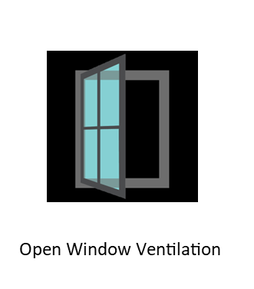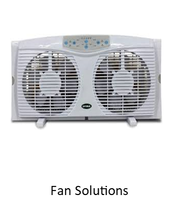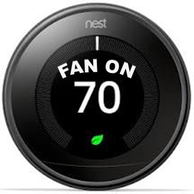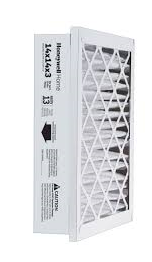Ventilation is key in minimizing COVID exposure from aerosol particles. Homes are vulnerable Housing is expensive and scarce. This forces denser living conditions. Any household member employed as service personnel that may be exposed to the public inside a building, will have the highest rate of exposure. Ventilation Strategy - A Practical Approach
We've taken a practical approach that anyone can implement. Lets explore options. WARNING - If you suspect someone is COVID infected, further strategies must be considered developing upstream/downstream control of ventilation. Watch Videos below.
Ventilation Strategies Open Windows - CDC is recently promoting the importance of making your home COVID safer with ventilation with an open window strategy. An open window will create increase natural airflow. This will dilute the air in the home reducing the concentration of COVID airborne or aerosol virus. It's understood that they will cause comfort issues when its hot or cold outside creating discomfort. Read more from CDC Website on Open window ventilation.  FANS, portable, window, startionary Ceiling fans or portable fans along with an open window is effective in diluting air and airborne particles. These should be strategically placed in areas of active occupancy to activate circulation. Window fans are advantegeous in integrating outdoor air key in dilution.  Central HVAC Strategy #1 - FAN-ON If you have a central heating, cooling system, a very simple strategy is to set your thermostat to a FAN-ON. This will ventilate all living areas with supply vents. This will effectively dilute the air reducing the concentration of the COVID virus potential. There has been more evidence that this forced airflow can dry the virus making it non-viral. It is recommended to operate several hours during waking times and occupancy of home.  Central HVAC Strategy #2 - MERV-13 Filters Central heating/cooling systems filters can trap airborne particles. There is a range of air filters that control trapping of airborne particles. MERV ratings stands for Minimum Energy Rating Value. The ratings denotes the abilility to trap smaller particles. MERV 1-6 traps dust, lint & pollen, MERV 8 will trap smaller mites & spores, MERV 11 - Pet dander, smoke & smog., MERV 13 - can trap .03 microns like bacteria & virus carrier.
|
AuthorWill Johnson is a certified residential energy assessor servicing San Diego since 2010 Archives
October 2023
Categories |
|
SUSTAINRGY 619.295.9455 [email protected]
|


 RSS Feed
RSS Feed